- Tesla is retrofitting its Supercharger network to non-Tesla EVs.
- Not all Supercharger stations have Magic Docks.
- All Tesla Superchargers and Level 2 stations should be open to non-Tesla EVs by the end of 2024.
- Use the Chargeway app to find compatible Tesla stations.
Tesla has a robust network of Superchargers, and the company recently opened them to other vehicles manufactured by other automakers. In February 2023, Tesla announced its plan to open at least 3,500 Superchargers to non-Tesla vehicles.
After Volkswagen Group announced the switch to NACS in December 2023, all major automakers – with the exception of Stellantis – will soon have access to Tesla charging stations. While most Tesla Superchargers will be available to non-Tesla drivers, about 5,000 older Supercharger stations will only be available for Tesla drivers. By the time of the migration in late 2024, over 12,000 Tesla Supercharger stations will be available for nearly all electric vehicles.
ADVERTISEMENT
How to Use a Tesla Supercharger Without a Tesla
Most non-Tesla vehicles use a CCS1 charging port. To accommodate non-Tesla vehicles like the Ford Mustang Mach-E and Volkswagen ID.4, Tesla retrofitted some Supercharging locations with a “Magic Dock” that drivers put atop the Tesla NACS (North American Charging Standard) plug. This special dock lets non-Tesla EVs charge at a rate of up to 250 kW.
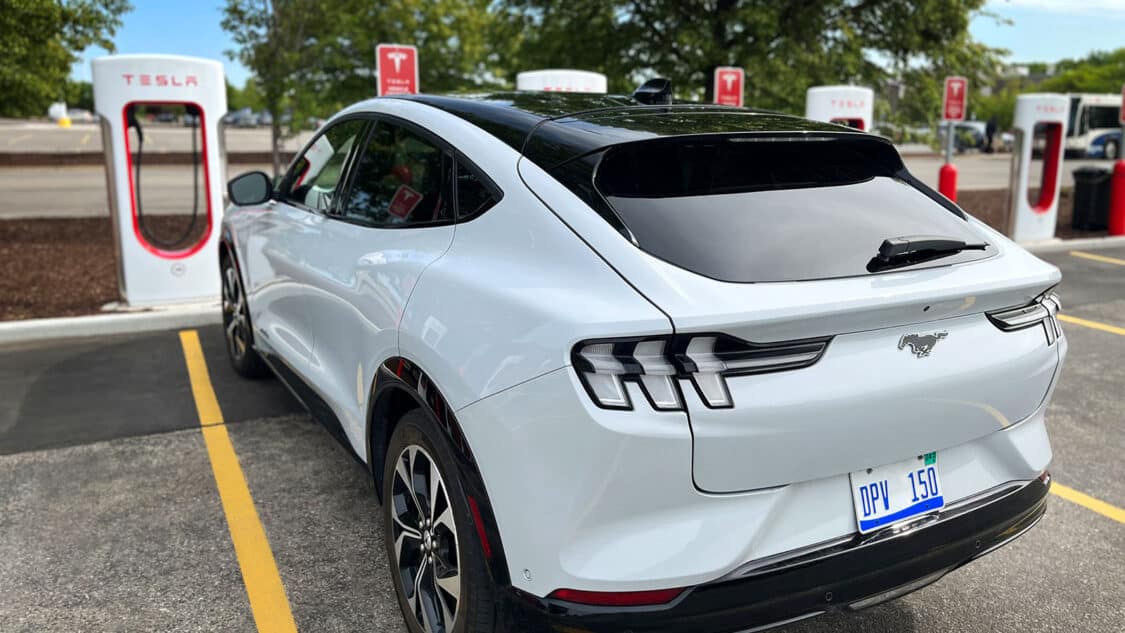
Tesla continues to offer more Supercharger stations with Magic Docks. At first, they were only available in a few places in California, New York, and Texas. Now, you’ll find Magic Docks all over the country – even in Mackinaw City, Michigan at the Star Line Ferry and in Natchitoches, Louisiana at the Shop-A-Lott. The best way to find a compatible station with a Magic Dock is to use an app like Chargeway.
At the time of writing, these states have at least one compatible Tesla Supercharger: Alabama, Alaska, Arizona, Colorado, Connecticut, Georgia, Illinois, Indiana, Kentucky, Louisiana, Maryland, Michigan, Minnesota, Mississippi, Nevada, Oregon, Utah, Virginia, and Washington.
Find Compatible Tesla Stations with Chargeway
After you add your EV’s details to the Chargeway app, you’ll be able to see all nearby stations and how quickly they will charge your vehicle (1 is the slowest, 7 is the fastest). Click on the filter and turn off the option that only shows plugs that fit your vehicle. You’ll then see the red circles for Tesla chargers – those are the Tesla Supercharger stations without Magic Docks.
If the Tesla chargers fit your non-Tesla EV (like my 2023 Kia EV6), the stations will show up as green circles. When I checked the Natchitoches and Mackinaw City Tesla Supercharger stations, they appeared as green circles. This screenshot from my phone shows that the Mackinaw City Tesla Supercharger will be compatible with my Kia EV6. Notice the notes at the bottom about the Tesla Magic Dock and the need for the Tesla Mobile App to pay for charging.
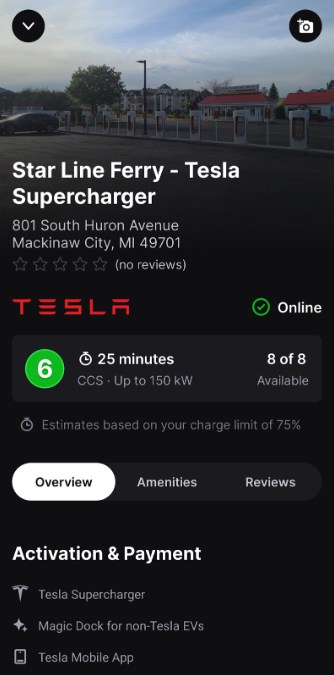
Red Tesla charging stations do not have Magic Docks available for non-Tesla EV drivers. For example, this Tesla Supercharger in Mishawaka, Indiana, is not ready for non-Tesla EVs. Chargeway does a nice job of letting EV drivers know what charging stations are available for their vehicles. Notice the note at the bottom, the Tesla Mobile App probably won’t work here.
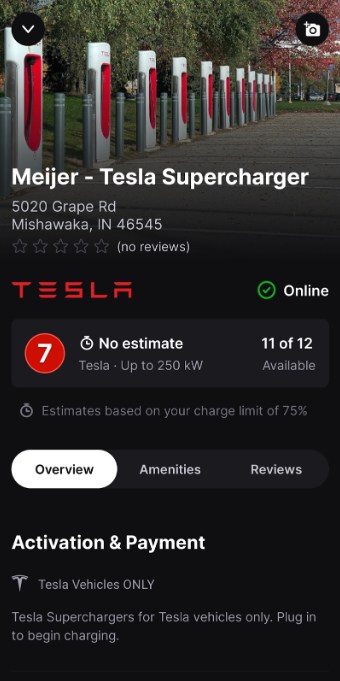
How to Use the Supercharger
Not all Tesla Superchargers are retrofitted for CCS1 EVs. Before you embark on your journey, check that the Superchargers you plan to use have the docks that fit your EV. Use the Tesla or Chargeway apps to see what is available.

When you arrive at the Supercharger station, choose an open stall, unlock the adapter, plug in, and begin charging. Using the Tesla app, select “Start Charging” to begin and “Stop Charging” to finish.
ADVERTISEMENT
Can You Use Your Own Tesla Charger Adapter?
If you need access to a Tesla Supercharger, you can purchase an adapter. They are available on Amazon and easily connect the CCS1 to the NACS plug.
Unfortunately, using a Tesla Supercharger with a non-Tesla isn’t as easy as it seems. The Tesla charging network bills Tesla owners based on the VIN – not through an app. You might have issues getting the Supercharger to start charging your non-Tesla EV. After the migration in late 2024, using the app should be seamless.
Another issue with the Supercharger and some non-Tesla EVs is the charging infrastructure, as Tesla Superchargers have a 400V system and many non-Tesla EVs have 800V systems – so the Supercharger will be slower than a 350-watt Electrify America station.
Tesla Supercharger stations have short cords, as all Teslas have similar charging port locations. Non-Tesla EVs do not have standard charging port locations, making Tesla charging stations problematic – especially if many parking spots are occupied.
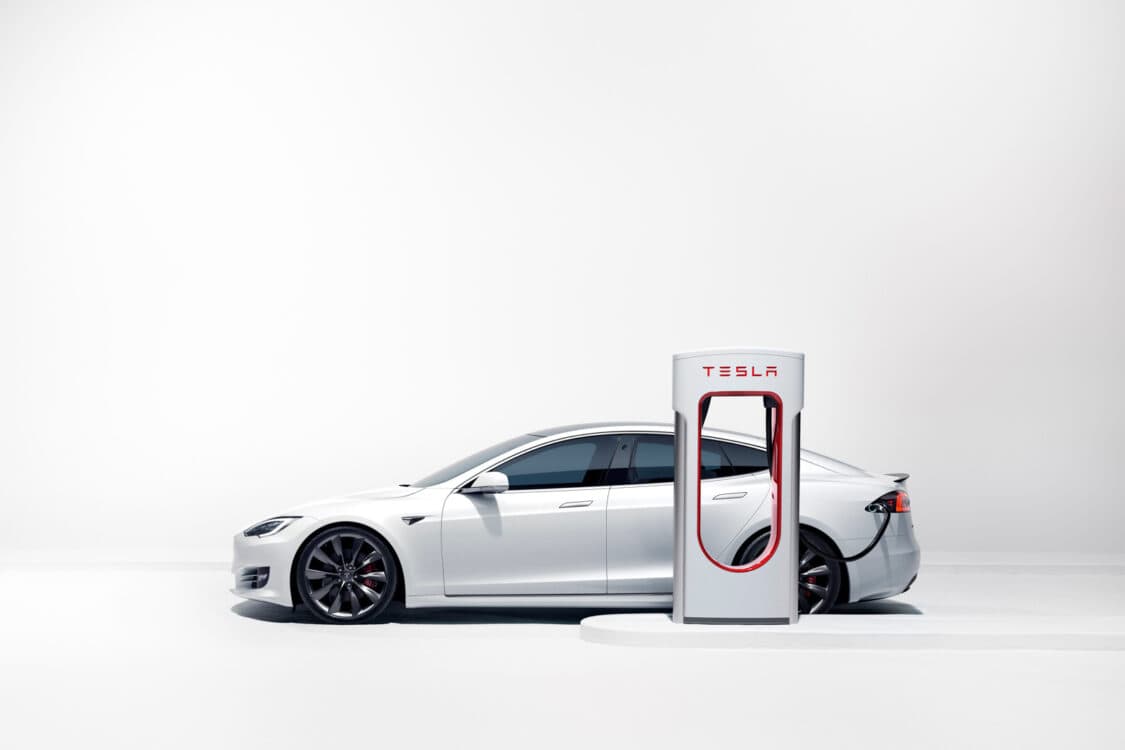
Can You Charge Any Electric Vehicle at a Tesla Station?
By the start of 2025, all EVs with DC fast charging capability will be able to use a Tesla Supercharger. Non-Tesla EVs made in 2024 and earlier have the CCS plug, so they will need an adapter.
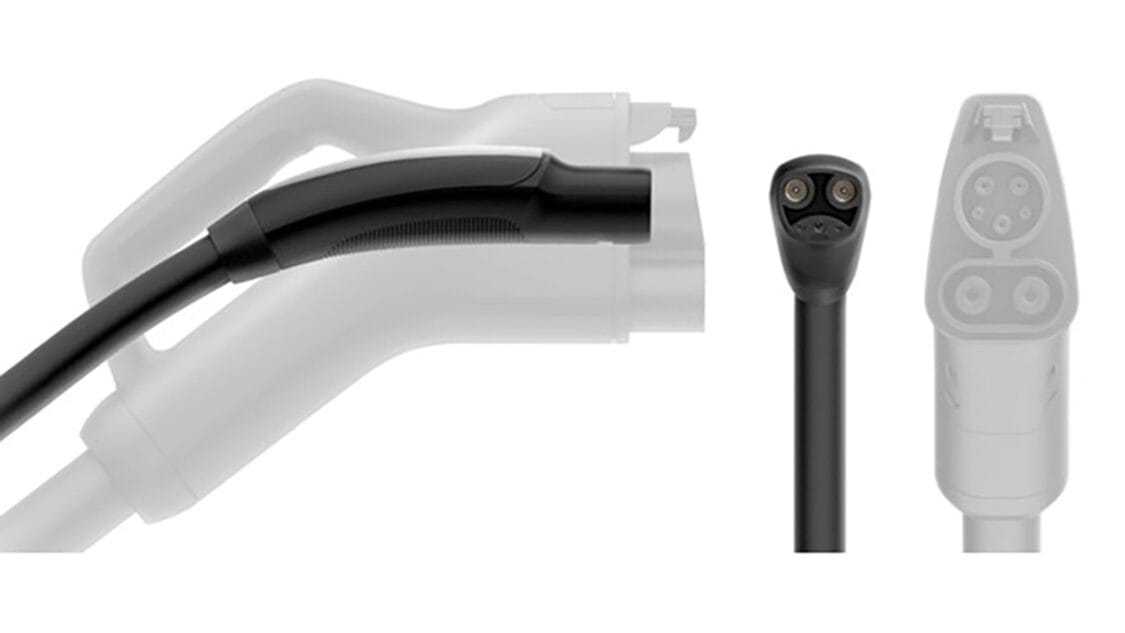
When the migration to Tesla charging is complete, all new 2025 EVs and some late 2024 models will have a new charging standard called J3400. This new charging system is expected to be installed in new EVs beginning the fall of 2024. It will replace the J1772 used in non-Tesla fully-electric vehicles. Plug-in hybrid EV models like the Jeep Wrangler 4xe or Chrysler Pacifica Hybrid (which cannot use DC fast-charging stations) will most likely keep the J1772 ports.
Now, non-Tesla EVs must use a CCS1-to-Tesla adapter, and they aren’t available everywhere. By the end of 2024, the majority of V3 and upcoming V4 Tesla Supercharger stations will open to EVs that can handle the 250 kW stations.
Why Tesla Made the Change
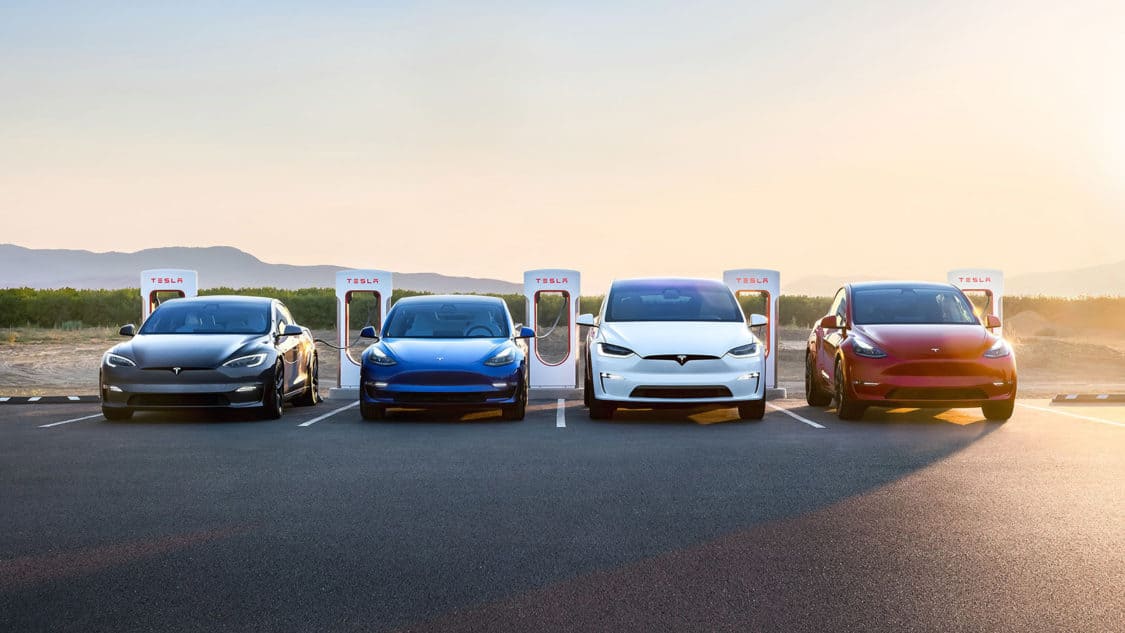
In early 2023, the White House announced that it wanted to build a robust network of EV charging stations around the country. To receive federal funding for the project, manufacturers who build and install the charging stations need to make their networks open to all EV brands.
If Tesla wanted to take advantage of the $7.5 billion in the federal infrastructure bill, they needed to remove the exclusivity and open their charging network. By opening their network, they can finance new stations with federal subsidies.
Along with opening the Superchargers to all EVs, Tesla will also open 4,000 Level 2 charging stations. Plug-in hybrid vehicles like the best-selling Jeep Wrangler 4xe and the BMW 330e will be able to take advantage of the Level 2 chargers.
Have a Back-Up Plan
If you are driving a non-Tesla EV and you are planning to use a Tesla Supercharger on a road trip, it’s a good idea to have a backup plan. While the Supercharger network is one of the most reliable, it’s not a guarantee that every station will fit your EV until the migration is complete. Have a backup plan with an EV charging brand that is designed to fit your vehicle – just in case.
ADVERTISEMENT

IMAGES: TESLA, FORD
FTC: We use income-earning auto affiliate links. Learn more.


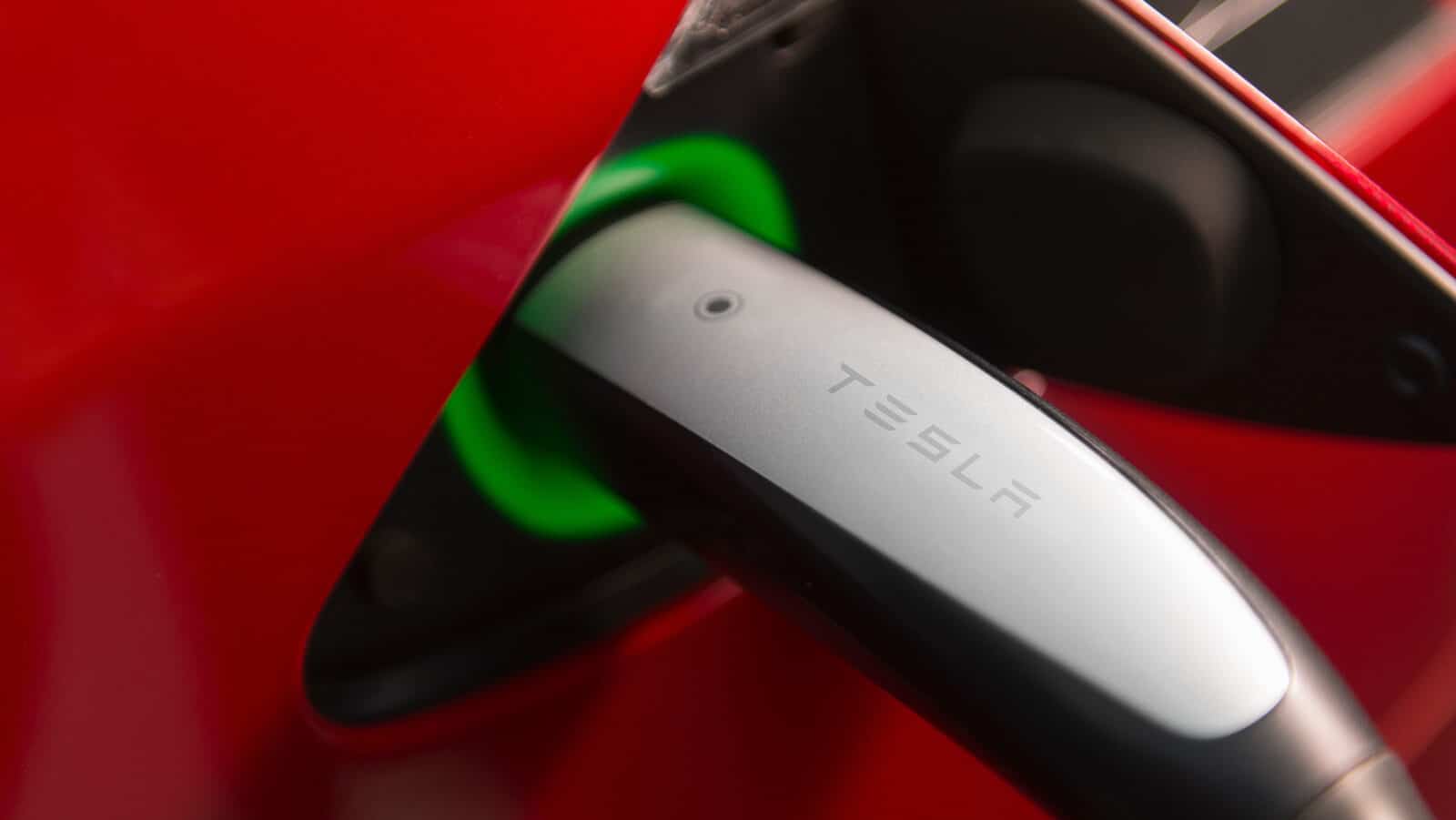
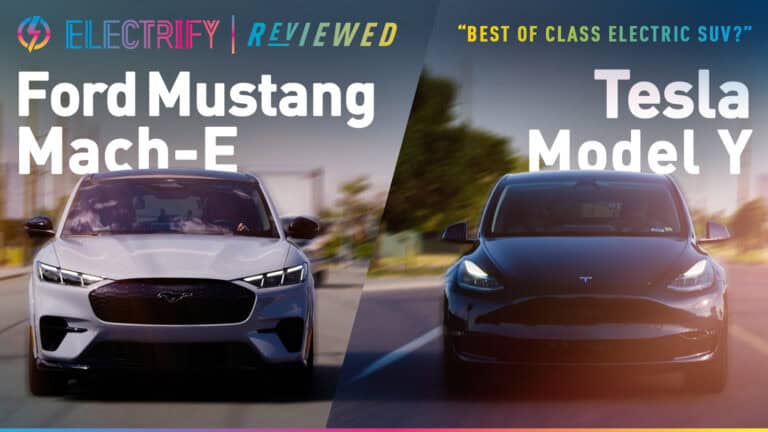
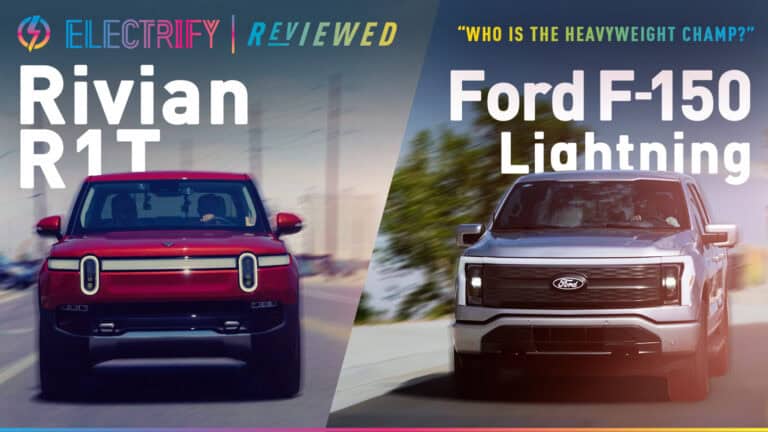

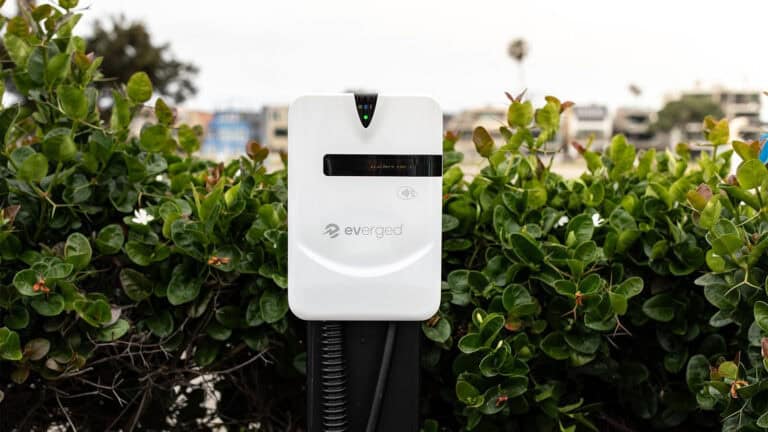
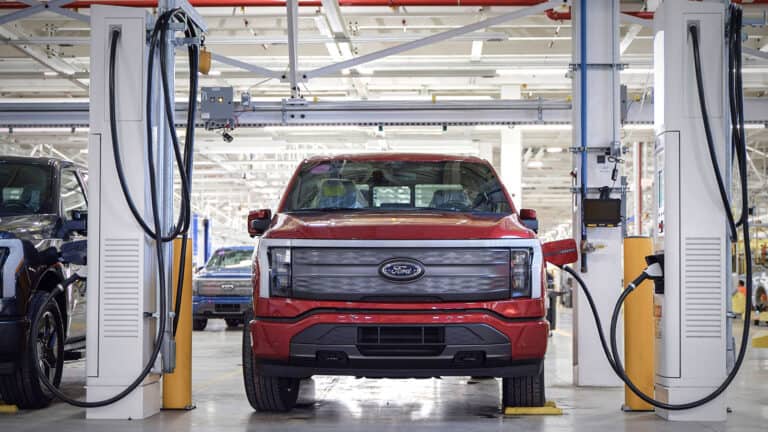
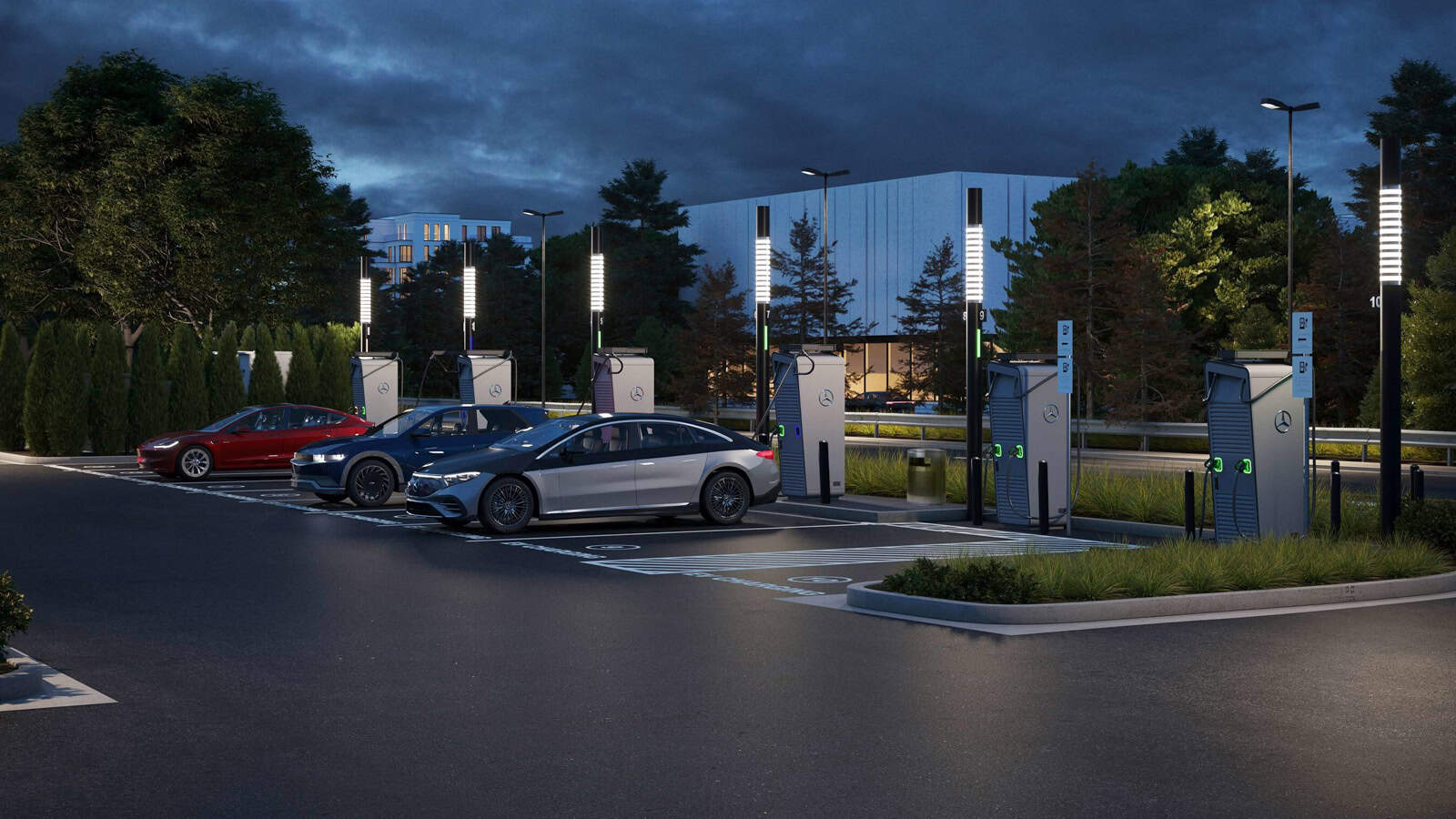
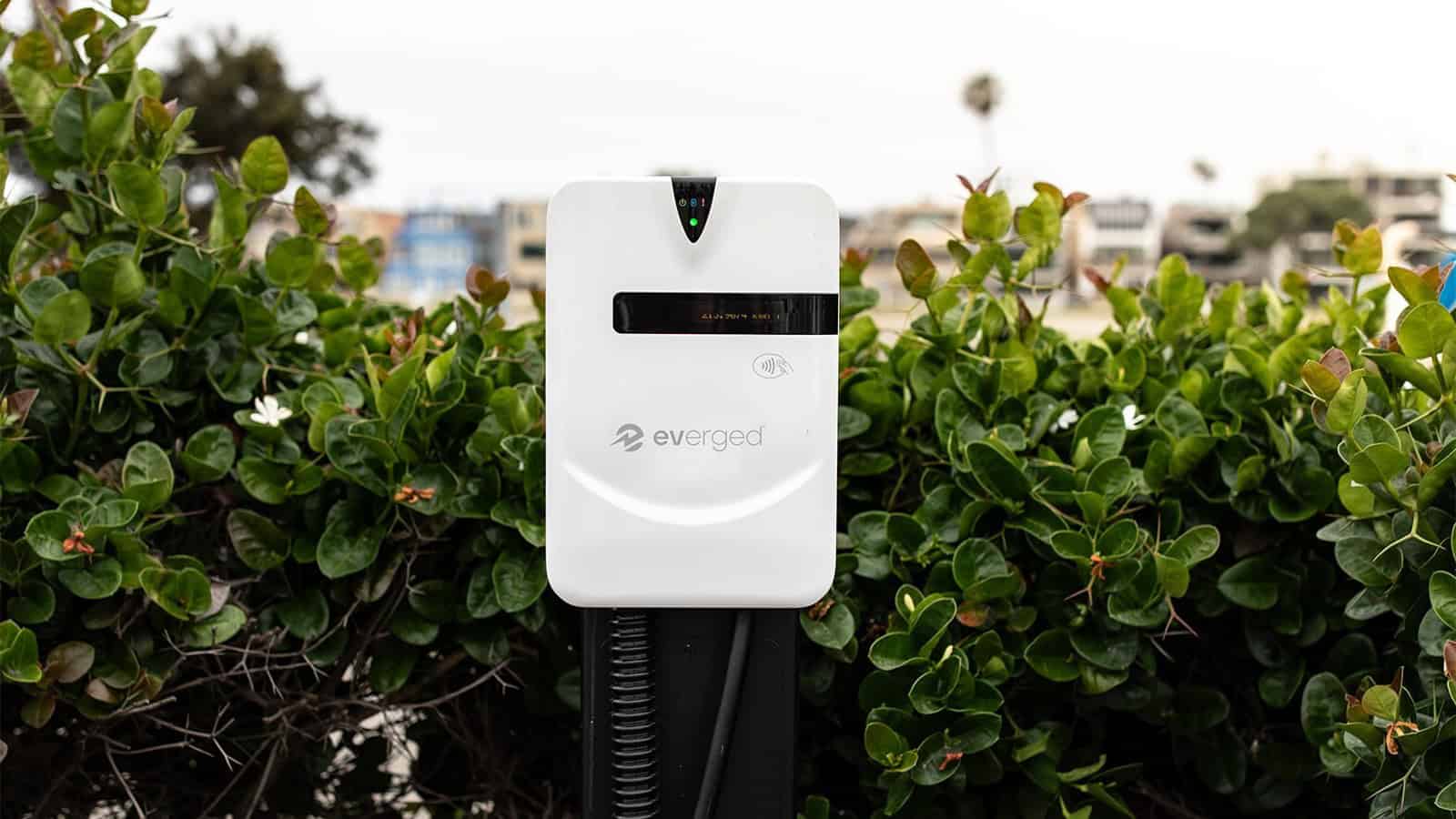


One Response